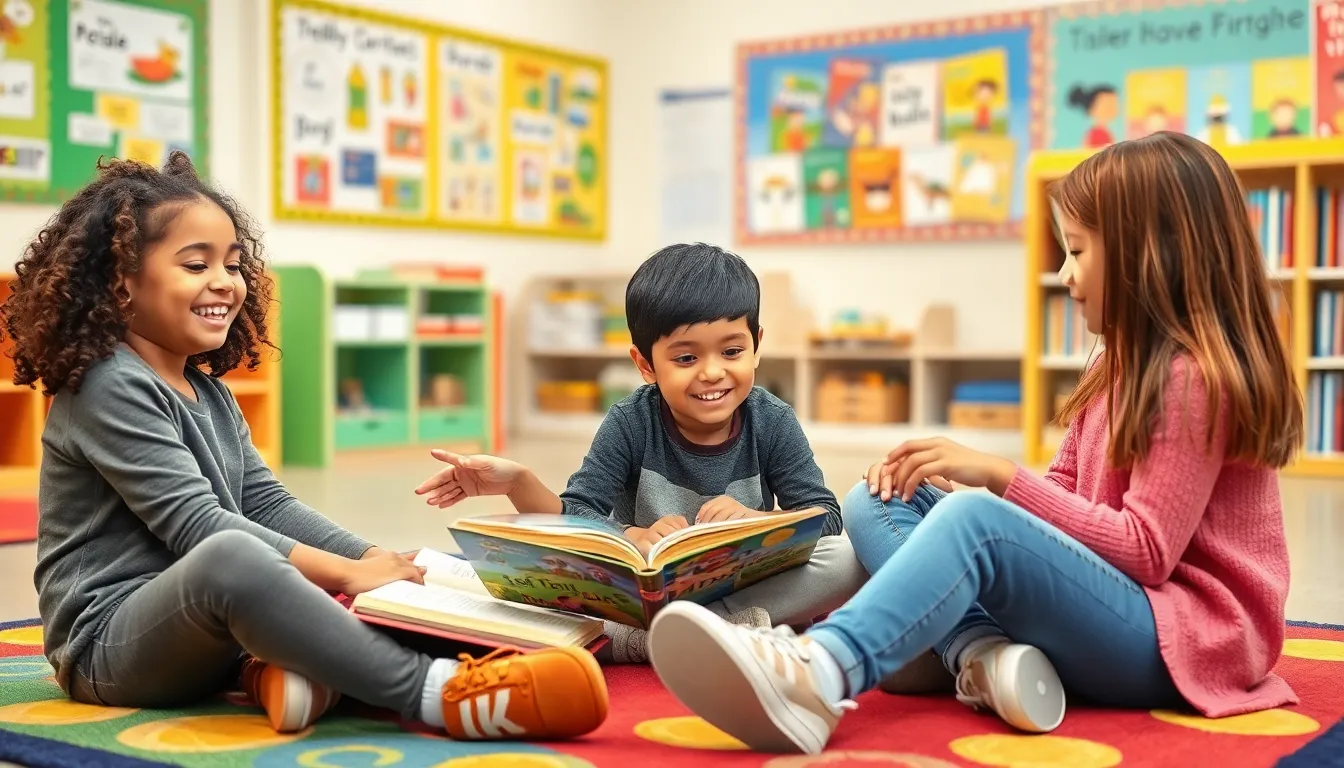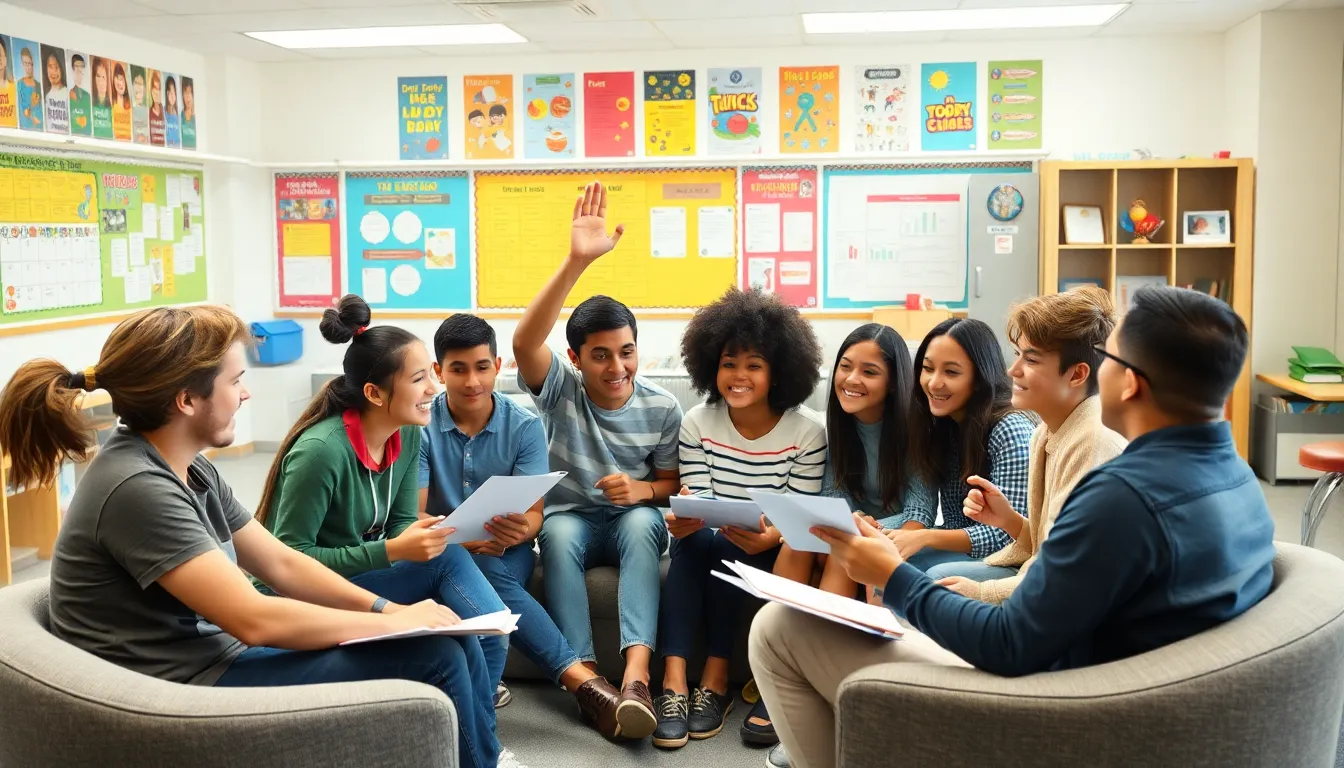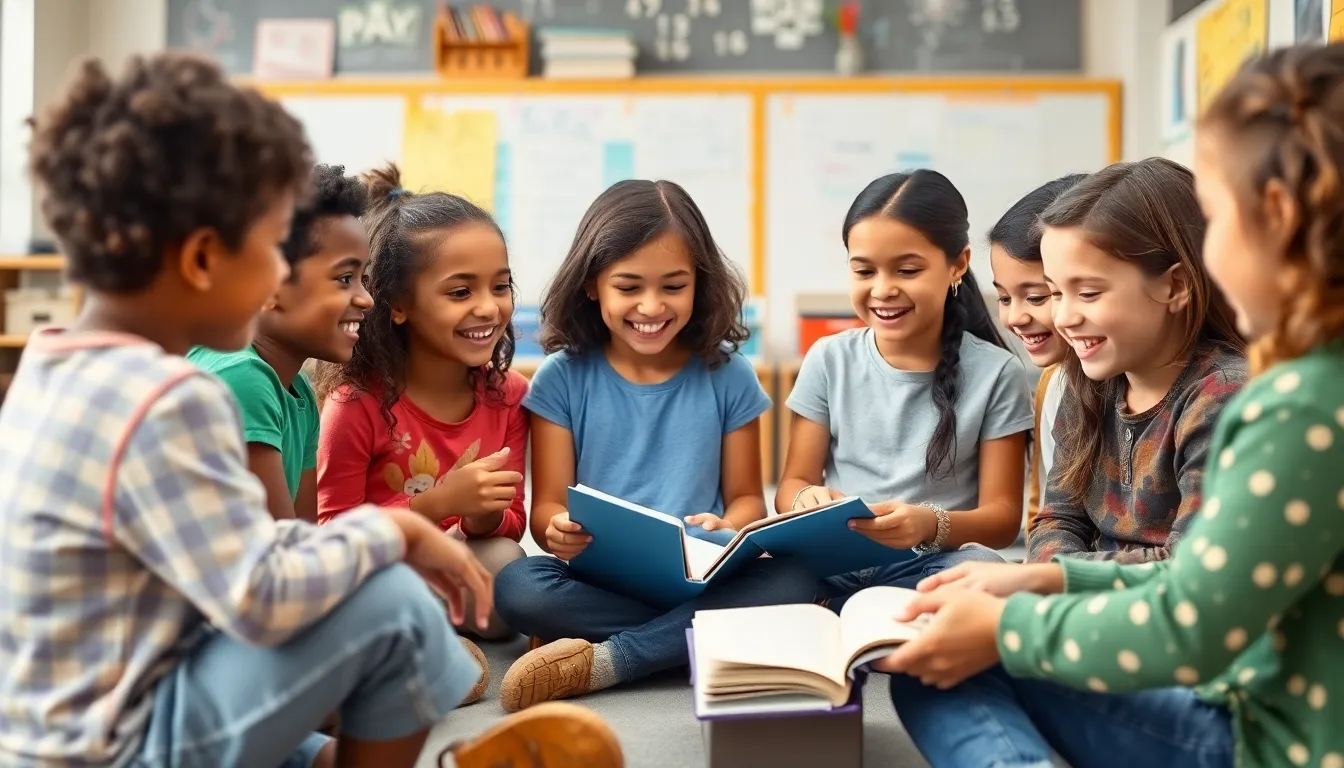In the world of education, guided reading activities are like the secret sauce that transforms a bland dish into a mouthwatering masterpiece. Imagine a classroom buzzing with excitement as students dive into books, each one unraveling stories while honing their reading skills. It’s not just about reading; it’s about creating a community of enthusiastic learners ready to conquer the literary universe.
Table of Contents
ToggleOverview of Guided Reading Activities
Guided reading activities support students’ reading development by providing tailored instruction. These activities focus on specific reading strategies that enhance comprehension and fluency. Teachers guide small groups, allowing for personalized attention and targeted skill-building.
Engagement remains a priority during guided reading sessions. Students interact with texts at their appropriate reading levels. They explore various genres, fostering a deeper appreciation for literature. This exploration cultivates critical thinking skills as students discuss and analyze content.
Moreover, incorporating diverse materials enhances guided reading activities. Books with relatable themes stimulate connections to students’ lives. Using audiobooks or digital resources expands access to various texts, accommodating different learning styles.
Assessment plays a crucial role in guided reading. Teachers evaluate students’ progress through informal assessments and observations. Adjustments to instruction based on these assessments ensure each student’s needs are met effectively.
Collaboration among students during guided reading builds a community of learners. They engage in peer discussions, share insights, and support each other’s learning journeys. This collaboration reinforces skills and instills a sense of belonging within the classroom environment.
Integrating guided reading with other literacy activities creates a cohesive learning experience. Combining reading with writing or speaking activities allows students to apply their skills in different contexts. This holistic approach promotes a comprehensive understanding of language and literature.
Guided reading activities serve as an integral component of effective literacy instruction, fostering engagement, collaboration, and growth in reading skills among students.
Benefits of Guided Reading Activities
Guided reading activities offer various benefits that significantly enhance student learning and engagement. They serve as a vital element in literacy instruction.
Enhancing Comprehension Skills
Guided reading activities improve students’ comprehension skills directly. Teachers select texts that match students’ reading levels, ensuring each individual engages with appropriately challenging material. Focusing on specific strategies such as predicting, summarizing, and questioning fosters deeper understanding. Students practice these skills in a supportive environment where they receive immediate feedback. Encouraging them to think critically helps integrate new information with prior knowledge. Regular assessments of comprehension progress ensure targeted instruction, allowing teachers to adapt their approaches effectively. These activities not only enhance comprehension but also instill confidence in students as they navigate various texts.
Fostering Collaboration and Discussion
Guided reading creates opportunities for collaboration and discussion among students. Small group settings allow for meaningful interactions, where learners share insights and perspectives about texts. Each student participates actively, facilitating peer learning and support. Engaging in discussions encourages them to articulate thoughts, ask questions, and clarify ideas. Teachers guide these conversations to promote higher-order thinking skills. Collaboration nurtures a sense of community, making literacy a shared journey. Students learn from each other, enhancing their analytical skills through diverse viewpoints. Building these collaborative skills contributes to a richer learning experience and deeper literary appreciation.
Types of Guided Reading Activities
Guided reading activities come in various forms, each tailored to enhance student learning. These activities create diverse opportunities for engagement and personalized learning.
Small Group Sessions
Small group sessions focus on specific reading skills through targeted interaction. Teachers facilitate these groups, addressing the unique needs of each student. Students benefit from discussions, providing them ample chance to express thoughts and clarify ideas. Engaging with texts at the appropriate level encourages deeper comprehension. Diverse reading materials may be utilized, allowing students to explore different genres. This environment fosters a sense of community as peers support and learn from each other.
Interactive Read-Alouds
Interactive read-alouds encourage students to engage with texts in a dynamic way. During these sessions, teachers model fluent reading and effective comprehension strategies. Students can ask questions and offer predictions about the text being read. This active participation enhances engagement and fosters critical thinking skills. Sharing thoughts about themes and characters allows for rich discussions. Teachers may select high-interest books to capture students’ attention and spark further curiosity.
Individualized Reading Plans
Individualized reading plans cater to the unique needs of each student. These plans include specific goals based on assessed reading levels and learning styles. Teachers create tailored activities that focus on developing specific skills. Progress monitoring ensures that instruction adapts to changing needs over time. Students follow customized pathways that allow for a more personalized learning experience. This approach empowers them to take ownership of their reading development, supporting both comprehension and fluency.
Strategies for Implementing Guided Reading Activities
Implementing effective guided reading activities requires a strategic approach. Educators focus on selecting appropriate texts and grouping students effectively to maximize learning outcomes.
Selecting Appropriate Texts
Choosing texts that match students’ reading levels is essential for success. Diverse genres expose students to various writing styles, enhancing their appreciation for literature. Selecting relatable books maintains interest while reinforcing comprehension skills. Incorporating nonfiction materials supports the development of critical thinking by presenting factual content. Furthermore, educators should assess students’ interests to ensure the chosen texts resonate with them. This approach fosters a deeper connection to the material, encouraging active engagement during reading sessions.
Grouping Students Effectively
Effective grouping of students enhances collaboration and learning. Small groups allow teachers to focus on specific reading strategies tailored to students’ needs. Forming groups based on reading levels promotes targeted instruction while still providing opportunities for mixed-ability interactions. Implementing flexible grouping provides a dynamic learning environment as students can switch groups based on their progress. Engaging students with varied group members encourages the exchange of ideas, fostering diverse perspectives in discussions. Additionally, maintaining a balance between peer support and independence is crucial for student growth in reading skills.
Conclusion
Guided reading activities are essential in creating a vibrant learning atmosphere that nurtures students’ reading abilities. By offering tailored instruction and fostering collaboration, these activities empower students to engage deeply with texts. The focus on diverse materials and interactive discussions not only enhances comprehension but also cultivates critical thinking skills.
As educators implement these strategies, they contribute to a supportive community where students thrive as independent readers and thinkers. The impact of guided reading extends beyond individual growth, enriching the classroom experience as a whole. Embracing these practices leads to a more dynamic and effective approach to literacy instruction.






